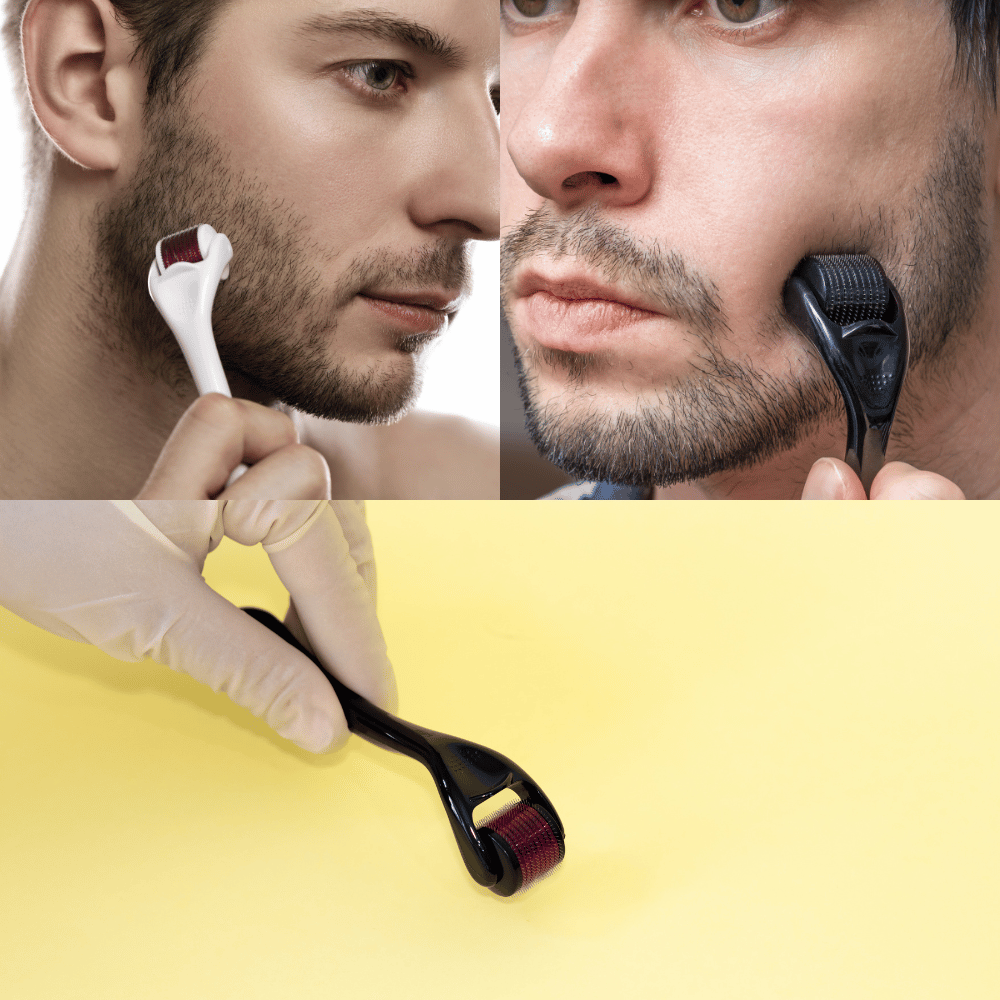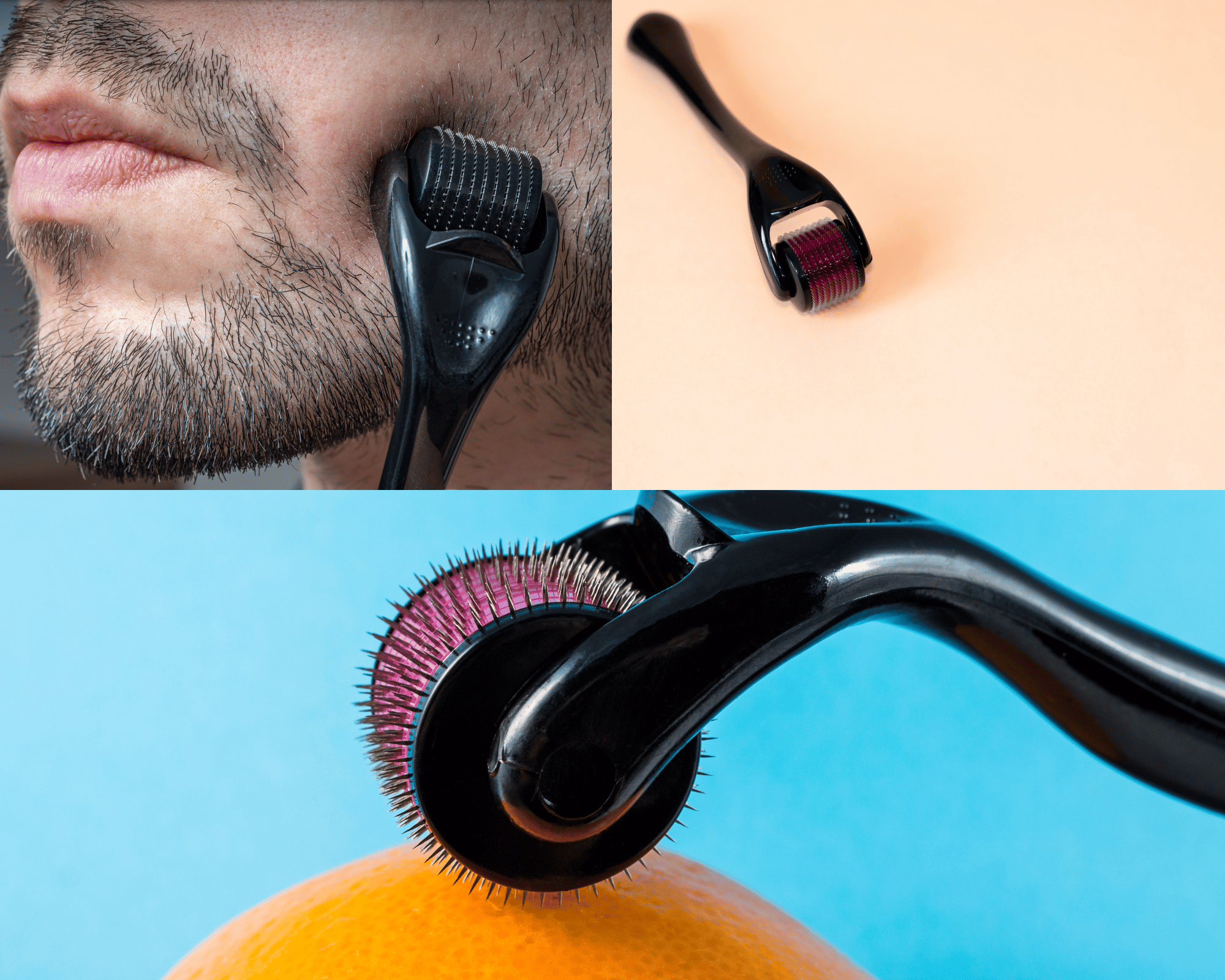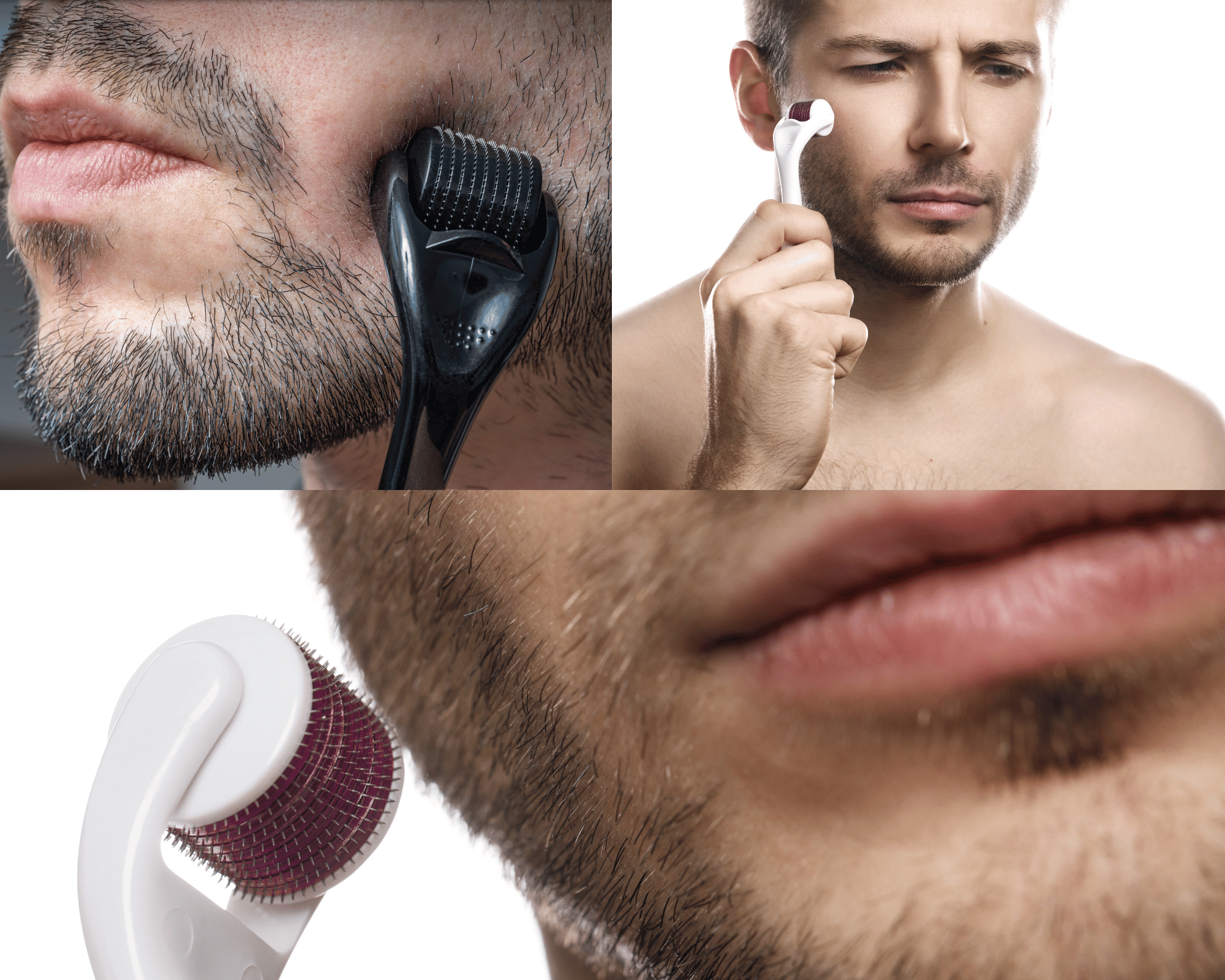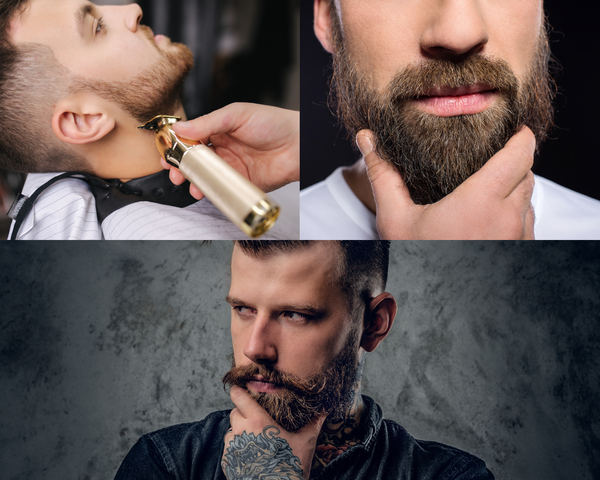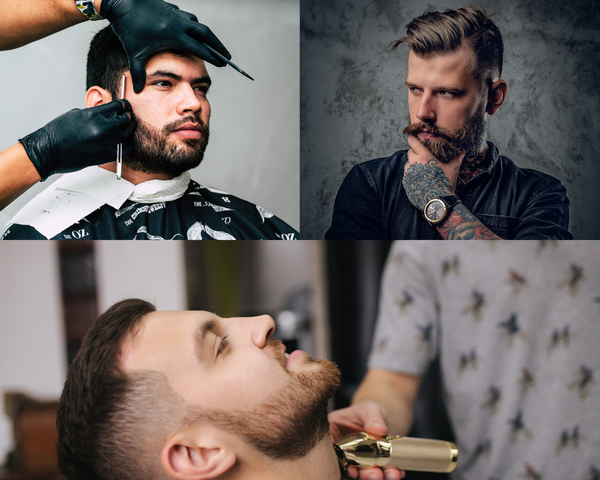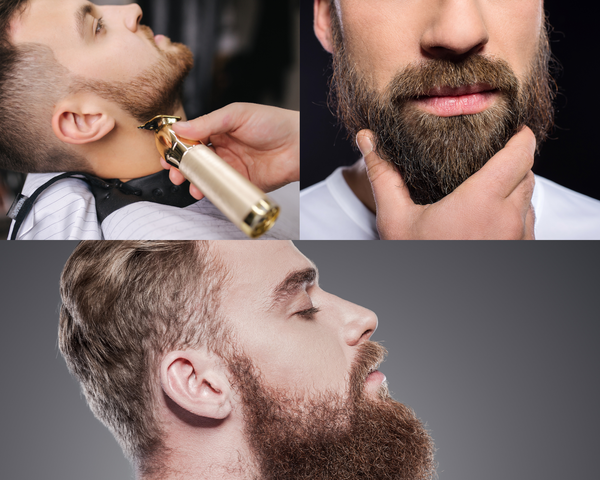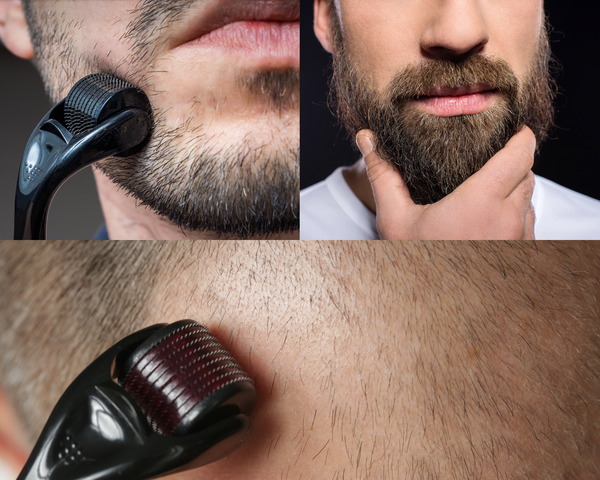Derma rolling, also known as microneedling, involves using a roller with tiny needles to create micro-injuries on the skin. This process stimulates collagen production and enhances blood circulation, which can promote hair growth. For those looking to boost their beard growth, derma rolling can be a game-changer. It has been clinically tested to ensure its safety and effectiveness.
Key Takeaways:
- Understanding Derma Rolling: Learn what derma rolling is and how it can benefit beard growth.
- Safety First: Discover essential safety tips to ensure a safe derma rolling experience.
- Potential Side Effects: Be aware of possible side effects and how to mitigate them.
What is Derma Rolling?
Derma rolling, also known as microneedling, involves using a roller with micro needles to create micro-injuries on the skin. This process stimulates collagen production and enhances blood circulation, which can promote hair growth. For those looking to boost their beard growth, derma rolling can be a game-changer.
The concept might sound intimidating, but it’s a popular technique in skincare and hair growth. By creating controlled micro-injuries, the skin’s natural healing process is triggered, leading to improved texture and potentially thicker hair. However, understanding the process is crucial before diving in.
Is Derma Rolling Safe for Beard?
Safety is a top concern for anyone considering derma rolling for their beard. Generally, when done correctly, derma rolling is safe. However, it’s essential to follow proper guidelines to avoid any adverse effects. Using a derma roller with needles that are too long or applying too much pressure can lead to skin damage.
Choosing the right derma roller is vital. Opt for a roller with needles no longer than 0.5mm for facial use. This size is effective for stimulating hair growth without causing harm. Always ensure the roller is clean and sterilized before each use to prevent infections. For personalized advice, consult a board certified dermatologist.
Does Derma Rolling Hurt?
Pain is subjective, and what might be uncomfortable for one person could be tolerable for another. Generally, derma rolling causes mild discomfort rather than pain. The sensation is often described as a tingling or prickling feeling. If you're new to derma rolling, start with a gentle approach to gauge your pain threshold.
To minimize discomfort, consider using a numbing cream before the procedure. This can help ease the sensation and make the process more comfortable. Remember, the goal is to stimulate, not to cause pain, so adjust your technique accordingly.
Beard Roller Side Effects best beard derma roller safety
While derma rolling is generally safe, there are potential side effects to be aware of. These can include redness, irritation, and minor swelling. These effects are usually temporary and subside within a few hours to a day. The micro-injuries stimulate the production of new skin cells which aids in the healing process. However, if you experience prolonged discomfort, it may be wise to consult a dermatologist.
To minimize side effects, ensure your skin is clean before rolling and avoid applying too much pressure. Post-treatment, hair loss, derma rolling, hair follicle cells, apply a soothing serum or moisturizer to calm the skin. This can help reduce redness and promote healing.
Beard Roller for Acne-Prone Skin hair growth
If you have acne-prone skin, extra caution is necessary. Derma rolling can potentially aggravate acne if not done correctly. Avoid rolling over active acne lesions, as this can spread bacteria and worsen the condition. Instead, focus on clear areas and maintain strict hygiene practices.
Using a derma roller on acne-prone skin requires a gentle touch and proper aftercare. Clean the roller thoroughly before and after each use, and consider incorporating products with antibacterial properties into your skincare routine to prevent breakouts.
Choosing the Right Derma Roller for facial hair and patchy facial hair
Selecting the right derma roller is crucial for a safe and effective experience. Look for a roller with high-quality titanium needles and a comfortable grip. The needle length should be appropriate for facial use, typically between 0.25mm and 0.5mm.
Investing in a reputable brand can make a significant difference in your derma rolling journey. Quality rollers are less likely to cause skin damage and can provide better results. Always prioritize safety and effectiveness over cost when choosing your derma roller.
Preparing Your Skin for Derma Rolling
Preparation is key to a successful derma rolling session. Start by cleansing your face thoroughly to remove any dirt or oil. This ensures the roller can glide smoothly over the skin without introducing bacteria.
Consider applying a hydrating serum before rolling. This can enhance the roller's effectiveness and provide additional nourishment to the skin. A well-prepared canvas can lead to better results and a more comfortable experience.
Safety Precautions for Sensitive Skin
When using a derma roller, it’s essential to take safety precautions, especially if you have sensitive skin. Here are some tips to help you use a derma roller safely:
- Start with a gentle touch: If you have sensitive skin, begin with a light touch and gradually increase the pressure as your skin becomes more accustomed to the derma roller. This helps to minimize skin irritation and allows your skin to adapt to the treatment.
- Choose the right needle length: For sensitive skin, it’s best to start with a shorter needle length, such as 0.25mm. As your skin becomes more tolerant, you can gradually move to longer needles, up to 0.5mm. This ensures that you stimulate hair growth without causing unnecessary discomfort.
- Avoid rolling over the same area multiple times: Rolling over the same area repeatedly can cause irritation and increase the risk of skin damage. Aim for even coverage by rolling in different directions without overworking any single spot.
- Don’t roll too aggressively: Apply gentle pressure and roll the derma roller in a smooth, even motion. The goal is to create micro-injuries that stimulate collagen production, not to cause visible wounds.
- Avoid rolling over broken skin: If you have broken skin or active acne, avoid rolling over those areas until they have healed. Rolling over damaged skin can exacerbate the issue and spread bacteria.
- Clean and disinfect the derma roller: Regularly clean and disinfect your derma roller to prevent the spread of bacteria and infection. Use rubbing alcohol to sterilize the roller before and after each use.
- Moisturize after use: After using the derma roller, apply a soothing moisturizer to help calm and hydrate the skin. This can reduce redness and support the healing process.
By following these safety precautions, healthy hair growth, facial hair growth, you can use a derma roller effectively while minimizing the risk of skin irritation and damage.
Using Derma Rollers for Facial Hair Growth
Derma rollers can be an effective tool for promoting facial hair growth, especially when used in conjunction with other hair growth treatments. Here’s how to use a derma roller for facial hair growth:
- Choose the right needle length: For facial hair growth, it’s best to use a derma roller with a needle length of 0.5mm to 1.0mm. This range is effective for stimulating hair follicles and promoting hair growth without causing excessive discomfort.
- Roll in multiple directions: To ensure even coverage and stimulate hair growth, roll the derma roller in multiple directions: horizontally, vertically, and diagonally. This technique helps to promote collagen production and improve blood circulation to the hair follicles.
- Focus on patchy areas: If you have patchy facial hair, use the derma roller to target these areas specifically. Rolling over patchy spots, such as the cheeks or chin, can help to stimulate hair growth and fill in gaps.
- Use in combination with minoxidil: Combining derma rolling with minoxidil can enhance the effectiveness of your hair growth treatment. The micro-injuries created by the derma roller can improve the absorption of minoxidil, leading to better results.
- Be consistent: Consistency is key to seeing results. Use the derma roller 1-2 times a week to stimulate hair growth. Over time, you should notice an improvement in the thickness and coverage of your facial hair.
- Be patient: Facial hair growth can take time, so it’s important to be patient and consistent with your derma roller treatment. Results may not be immediate, but with regular use, you should see gradual improvements.
Remember to always follow proper safety precautions and use the derma roller as directed to avoid any adverse effects. By incorporating derma rolling into your routine, patchy facial hair, hair follicles, acne scars, you can promote facial hair growth and achieve a fuller, use a derma roller, beard hair, beard rollers, beard roller healthier beard.
How to Use a Beard Roller Safely
Using a beard roller safely involves more than just rolling it over your face. Begin by gently rolling in different directions: vertically, horizontally, healthy skin, skin irritation and diagonally. This ensures even coverage and stimulates hair growth effectively.
Avoid applying excessive pressure, as this can damage the skin. The goal is to create micro-injuries, not visible wounds. After rolling, apply a soothing serum to calm the skin and promote healing. Additionally, using a replacement head is crucial to maintain the effectiveness and hygiene of the derma roller.
Post-Derma Rolling Care
Aftercare is crucial to maximize the benefits of derma rolling. Immediately after rolling, your skin may feel sensitive. Apply a soothing serum or moisturizer to help calm any irritation and support the healing process.
Avoid sun exposure and harsh skincare products for at least 24 hours post-treatment. This allows your skin to recover without additional stress. Proper aftercare can enhance results and minimize potential side effects.
Frequency of Derma Rolling
Determining how often to derma roll depends on your skin’s sensitivity, skin type, and the needle length used. For beginners, once a week is a good starting point. This frequency allows your skin to adapt to the process without overwhelming it.
As your skin becomes accustomed to derma rolling, you can gradually increase the frequency. However, always listen to your skin and adjust accordingly. Over-rolling can lead to irritation and should be avoided.
Common Mistakes to Avoid
Avoiding common mistakes can enhance your derma rolling experience. One frequent error is using a roller with needles that are too long. This can cause unnecessary pain and damage. Stick to recommended needle lengths for facial use.
Another mistake is neglecting hygiene. Always sterilize your roller with rubbing alcohol before and after each use to prevent infections. Proper maintenance ensures a safe and effective derma rolling journey.
Benefits of Derma Rolling for Beard Growth
Derma rolling offers several benefits for those seeking to enhance beard growth. By stimulating collagen production, keratin production, and improving blood circulation, it can lead to thicker, healthier hair. This non-invasive method is a popular choice for those looking to boost their beard naturally.
In addition to promoting hair growth, beard growth, facial hair derma rolling can improve skin texture and reduce the appearance of scars. This dual benefit makes it an attractive option for individuals looking to enhance both their beard and skin health.
Alternatives to Derma Rolling
If derma rolling isn’t for you, there are alternative methods to consider. Topical treatments, such as minoxidil and topical minoxidil, can promote hair growth without the need for needles. These products are widely available and can be effective when used consistently.
Another option is laser therapy, which uses light to stimulate hair follicles. While more expensive, it offers a needle-free approach to enhancing beard growth. Exploring different options can help you find the best method for your needs.
Consulting a Professional
If you’re unsure about derma rolling, consulting a professional can provide valuable insights into your skin concerns. Dermatologists and skincare experts can offer personalized advice based on your skin type and goals. They can also perform the procedure safely if you’re hesitant to do it yourself.
Professional guidance can help you avoid common pitfalls and achieve the best results. Whether you’re new to derma rolling or seeking to optimize your routine, expert advice can be a worthwhile investment.
Summary
Derma rolling for beard growth is a safe and effective method for achieving a fuller beard when done correctly. By understanding the process, choosing the right tools, and following proper safety tips, you can enhance your beard naturally. While there are potential side effects, they are generally mild and manageable with the right precautions. Whether you’re new to derma rolling or looking to refine your technique, this guide provides the essential information you need for a successful experience.
FAQ
Q1: Can derma rolling cause permanent damage?
A1: When used correctly, derma rolling is unlikely to cause permanent damage. However, using needles that are too long or applying too much pressure can lead to skin damage. Always follow recommended guidelines to ensure safety.
Q2: How soon can I expect results from derma rolling?
A2: Results vary depending on individual factors such as skin type and frequency of use. Generally, noticeable improvements in growing hair and beard growth can be seen after several weeks of consistent use.
Q3: Is derma rolling suitable for all skin types?
A3: Derma rolling can be used on most skin types, but those with sensitive or acne-prone skin should proceed with caution. It's advisable to consult a dermatologist if you have concerns about your skin's suitability for derma rolling.
